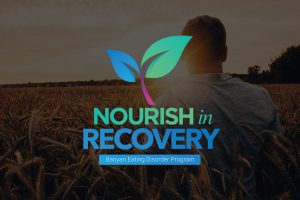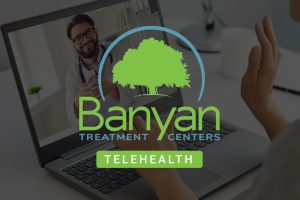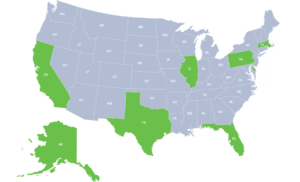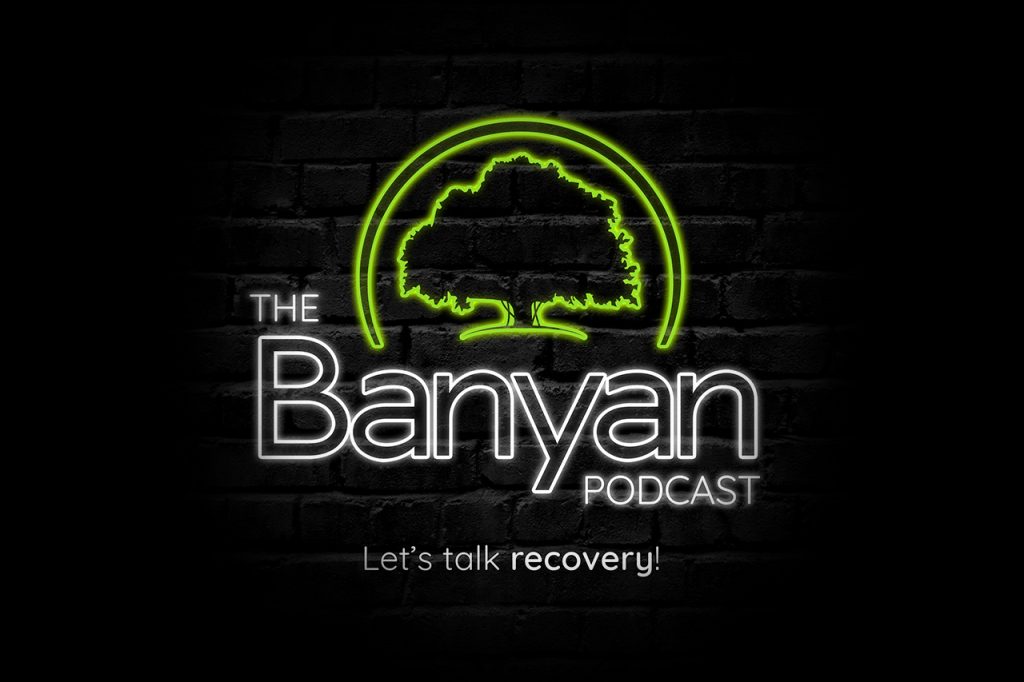Glossary of Terms
Abstinence:
Refraining from any drug use
Acetaminophens:
Pain relievers like Tylenol which are typically purchased over the counter and used to treat headaches, muscle aches, tension headaches, etc.
Addiction Assessment:
A way to determine the prevalence of chemical dependency in a client or the extent of one’s addiction (considers sociological, psychological, physical, and family factors, etc.) The first assessment is typically done over the phone and then another in-person assessment once the client (or patient) admits.
Addiction:
A repeated activity that continuously causes harm to oneself or others.
Addictive Personality:
An addictive personality is a set of traits that make an individual more prone to develop addictions to drugs, alcohol or other habit-forming behaviors.
Adverse Reaction:
An adverse drug reaction (ADR) is an injury caused by taking a medication. ADRs may occur following a single dose or prolonged administration of a drug or result from the combination of two or more drugs. Sometimes people may mix alcohol while taking pills. This is an example.
Affinity:
The strength a drug has that allows it to bind to its receptor, so if it’s fast binding it has a higher affinity.
Age at Onset:
The age at which one’s addictive behavior began which is an important factor in assessing an addiction.
Agonist:
A drug that activates a receptor in the brain.
Alkaloids:
Plant-produced organic compounds that are the active ingredients in many drugs. They include many drugs like morphine and quinine and poisons like atropine and strychnine.
Amphetamine:
A stimulant that is used in the treatment of attention deficit hyperactivity disorder (ADHD), narcolepsy, and obesity. The first amphetamine pharmaceutical was Benzedrine, a brand which was used to treat a variety of conditions. (Adderall is an example of a prescribed Amphetamine)
Analgesic:
An analgesic or painkiller is any member of the group of drugs used relieve from pain.
Antagonist:
A substance that can nullify another’s effects (a drug that does not elicit a response). It blocks a biological response by binding to a receptor rather than provoking the response like an agonist.
AOD:
Stands for Alcohol and Other Drugs
AODA:
Stands for Alcohol and Other Drug Abuse
Barbiturate:
A barbiturate is a drug that acts as a central nervous system depressant, and can therefore produce a wide spectrum of effects, from mild sedation to total anesthesia. The pharmacological treatment of barbiturate withdrawal is an extended process often consisting of transitioning the patient to a long acting benzodiazepine (for example Valium), followed by slowly tapering off the benzodiazepine.
Benzodiazepine:
A group of depressants used to induce sleep, prevent seizures, produce sedation, relieve anxiety and muscle spasms, etc.
Bioavailability:
A drug’s ability to enter the body
Biofeedback:
This is the process of gaining awareness of many physiological functions like heart rate, brain activity, etc. Some of the processes that can be controlled include brainwaves, muscle tone, skin conductance, heart rate and pain perception. At Banyan, we use Biofeedback to improve health, performance, and the physiological changes that often occur in conjunction with changes to thoughts, emotions, and behavior.
Blood Alcohol Level/Concentration:
The concentration level of alcohol in the bloodstream expressed as a percentage by weight.
Buprenorphine:
It can treat pain as well as addiction to narcotic pain relievers. (e.g. Buprenex).
Caffeine:
An alkaloid that acts as a diuretic and a stimulant (found in coffee, sodas and teas).
Carcinogen:
A cancer-causing chemical agent typically found in cigarettes
Causal Factors:
Various pre-disposed conditions that lead to individual chemical dependency problems (e.g. conditioning, environment, genetics, etc.)
Ceiling Effect:
Occurs when the dosage of buprenorphine is increased beyond maximum levels and no differences result.
Central Nervous System (CNS):
The brain and spinal cord.
Cirrhosis:
Chronic liver damage from a variety of causes leading to scarring and liver failure typically caused by alcohol and chronic drug use.
Clinical Opiate Withdrawal Scale (COWS):
A scale used to determine the severity of opioid withdrawal.
Codeine:
The pain-relieving sedative agent contained in opium.
Codependency:
An excessive emotional or psychological reliance on a partner, typically a partner who requires support due to an illness or addiction.
Cold Turkey:
Abruptly quitting a drug by choice in order to try to quit long-term.
Compulsion:
A psychological condition in which a person does a behavior compulsively, having an overwhelming feeling that they must do so.
Craving:
A powerful and strong desire for a substance. It’s also a symptom of the abnormal brain adaptions that result from addiction.
Crisis Intervention:
The methods used to offer immediate, short-term help to individuals who experience an event that produces emotional, mental, physical, and behavioral distress or problems.
Cross-Dependence:
The ability of one drug to suppress the withdrawal symptoms of one’s physical dependence on another. For example, methadone can be used to suppress withdrawal in persons physically dependent on heroin.
Cross-Tolerance:
Occurs when one’s tolerance for one drug results in their lessened response to another. Cross-tolerance has been observed with pharmaceutical drugs such as anti-anxiety agents and illicit substances, and sometimes the two of them together. Often, a person who uses one drug can be tolerant to a drug that has a completely different function.
D.O.C.:
This stands for drug of choice.
Denial:
One’s failure to either admit or realize his or her addiction or to recognize and accept the harm it can cause or has caused.
Depressants:
Sedatives that act on the Central Nervous System (e.g. to treat anxiety, high blood pressure, tension, etc.) Depressants are also occasionally referred to as "downers" as they lower the level of arousal when taken.
Depression:
One of the most frequent types of distress resulting from addiction. It is a mental health disorder characterized by persistently depressed mood or loss of interest in activities, causing significant impairment in daily life.
Detoxification (Detox):
The medical process of removing a toxic substance (e.g. a drug) from the body. This typically involves abstention from drink or drugs until the bloodstream is free of toxins.
Disease Model:
A theory of alcoholism that considers the addiction a disease rather than a social or psychological issue.
Disease:
A condition featuring medically significant symptoms that often have a known cause.
Dopamine:
A chemical produced naturally by the body and found in the brain, dopamine functions as a neurotransmitter—a chemical released by neurons (nerve cells) to send signals to other nerve cells. The brain includes several distinct dopamine pathways, one of which plays a role in reward-motivated behavior. Most types of rewards increase the level of dopamine in the brain, and many addictive drugs increase dopamine neuronal activity.
Drug Misuse:
One’s use of a drug not specifically recommended or prescribed when there are more practical alternatives; when drug use puts a user or others in danger.
Drug Tolerance:
A progressive state of decreased responsiveness to a drug.
DSMV:
The handbook which is the standard classification of mental disorders used by mental health professionals in the United States.
Dual-Diagnosis:
is the term used when a person has a mood disorder such as depression or bipolar disorder (also known as manic depression) and a problem with alcohol or drugs. A person who has a dual diagnosis has two separate illnesses, and each illness needs its own treatment plan.
DUI:
Stands for Driving Under the Influence of alcohol or another illicit substance that impairs one’s ability to drive.
DWI:
Stands for driving while intoxicated.
Dysphoria:
The opposite of euphoria. A state of unease or generalized dissatisfaction with life.
Enabling:
Helping an addicted person do things they can or should be doing for themselves, which causes disease progression. For example, giving them money when they ask for it and helping them have access to buy or use drugs.
Endogenous Opioid:
The opioids released by neurons that the body naturally produces in order to help us tolerate pain.
Endorphins:
Opium-like substances produced by the brain; natural painkillers.
Ethanol:
Ethanol, also called alcohol, ethyl alcohol, and drinking alcohol, is a compound and simple alcohol.
Euphoria:
A pleasurable state of altered consciousness; one reason for the preference of one addictive behavior or substance over another.
Evidence-based Treatment:
Scientifically validated treatment studies that have been conducted and extensive research has been documented on a particular treatment, and it has proven to be successful. The goal of EBT is to encourage the use of safe and effective treatments likely to achieve results and lessen the use of unproven, potentially unsafe treatments.
Excipient:
An inactive substance added to a drug to help bind the active ingredient.
Fetal Alcohol Syndrome (FAS):
Birth defects/abnormalities in babies of alcoholic and alcohol abusing mothers.
Fetal Drug Syndrome (FDS):
Birth defects/abnormalities in babies of drug abusing mothers.
Food and Drug Administration (FDA):
Administers federal laws regarding, for example, the safety and effectiveness of drugs.
Habit:
An outdated term for addiction/physical dependence.
Hallucinogen:
Chemical substance that distorts perceptions, sometimes resulting in delusions or hallucinations. The common types of hallucinogens are psychedelics, dissociatives and deliriants.
Harm Reduction:
Often the first stage of addiction treatment; reducing therapy instead of stopping the target behavior.
Heroin:
It’s also known as diamorphine among other names, is an opioid most commonly used as a recreational drug for its euphoric effects. It is used medically in several countries to relieve pain or in opioid replacement therapy. It can be injected, smoked, snorted or inhaled.
Hydrocodone:
An effective narcotic analgesic first developed as a cough medication.
Induction:
Beginning phase of buprenorphine treatment.
Inflation:
An addiction behavior’s tendency to slowly but surely increase in frequency
Intoxication:
A state of being drugged or poisoned which results from abuse of alcohol, barbiturates, toxic drugs, etc.
Legal Drugs:
Everyday drugs like alcohol, caffeine, carbohydrates, nicotine, etc.
Maintenance:
Stabilization of a patient who is indefinitely on a drug’s lowest effective dose.
Medical Model:
An addiction theory that considers addiction a medical rather than social issue.
Metabolism (of drugs):
The chemical and physical reactions carried out by the body to prepare for a drug’s execution.
Methadone:
It’s sold under the brand name Dolophine, among others, is an opioid used to treat pain and as maintenance therapy or to help with tapering in people with opioid dependence. Detoxification using methadone can either be done rapidly in less than a month or gradually over as long as six months.
Monotherapy:
Therapy using one drug
Morphine:
Morphine is a pain medication of the opiate type which is found naturally in a number of plants and animals and directly affects the central nervous system (CNS) to decrease the feeling of pain.
Mu Agonist:
A drug that stimulates physiologic activity on mu opioid cell receptors.
Mu Opioid Receptor:
Nerve cell receptor that mediates opioid addiction and tolerance through drug-induced activity.
Naloxone:
sold under the brand name Narcan among others, is a medication used to block the effects of opioids, especially in overdose. Naloxone may be combined within the same pill as an opioid to decrease the risk of misuse. When given intravenously, it works within two minutes, and when injected into a muscle, it works within five minutes. It can also be sprayed into the nose.
Naltrexone:
Naltrexone is a medication that stops the activity of opioids. It is primarily used in the management of alcohol dependence and opioid dependence.
Narcotic:
A drug that produces sleep/drowsiness and that also relieves pain while being potentially dependence producing.
National Board of Addiction Examiners (NBAE):
Provides certification for individuals in the addiction field
Negative Reinforcement:
Repetitive behavior to avoid something unpleasant.
Neurotransmitter:
Neurotransmitters, known as chemical messengers, are endogenous chemicals that enable neurotransmission. They transmit signals across a chemical synapse, such as a neuromuscular junction, from one neuron (nerve cell) to another "target" neuron, muscle cell, or gland cell. Neurotransmitters are released from synaptic vesicles in synapses into the synaptic cleft, where they are received by receptors on the target cells.
Nicotine:
Tobacco’s extremely toxic main active ingredient.
Nonopioid:
A drug that doesn’t activate opioid receptors
Obsession:
A mental behavior one repeats involuntarily that can be harmful (e.g., needing an alcoholic drink).
Off-Label Use:
Physician-approved use of a drug for uses other than those stated on its label.
Opiate:
The poppy’s natural ingredients and their derivatives (opium, morphine, codeine, and heroin).
Opioids:
Opium’s synthetic form.
Opium:
One of the most popular drugs; contained in muscle-relaxers, sleeping pills, and tranquilizers.
Over-the-Counter Drugs:
Legal non-prescription drugs.
Oxycodone:
A medicine used for relief of moderate to high pain.
Painkillers:
Analgesic substances (opioids and nonopioids). Some include: codeine, fentanyl (Actiq, Duragesic, Fentora), hydrocodone (Hysingla ER, Zohydro ER), hydrocodone/acetaminophen (Lorcet, Lortab, Norco, Vicodin),hydromorphone (Dilaudid, Exalgo), meperidine (Demerol), methadone (Dolophine, Methadose).
Partial Agonists:
Bind to and activate receptors to a lesser degree than full agonists.
Pharmacology:
Scientific branch of medicine concerned with the uses, effects, and modes of action of drug.
Physical Dependence:
The body’s physiologic adaptation to a substance.
Placebo:
A substance with no pharmacological elements that may elicit a reaction because of a patient’s mindset.
Polysubstance Abuse:
Concurrent abuse of more than one substance.
Post-Acute Withdrawal Syndrome (PAWS):
Withdrawal symptoms after initial acute withdrawal.
Precipitated Withdrawal Syndrome:
Precipitated withdrawal occurs when a full agonist, such as heroin, is displaced from opioid receptors by an antagonist, such as naloxone.
Prescription Drugs:
Only available by a physician’s order.
Psychedelic Drugs:
The drugs produce an intensely pleasurable mental state. Examples are LSD or acid, psilocybin mushrooms, commonly known as magic mushrooms or shrooms, or mescaline the active constituent of peyote.
Psychoactive Drug:
A mind- and behavior-altering substance which include: cocaine, crack cocaine, methylphenidate (Ritalin), ephedrine, MDMA (ecstasy), mescaline (cactus), LSD blotter, psilocybin mushroom (Psilocybe cubensis), Salvia divinorum, diphenhydramine (Benadryl), Amanita muscaria mushroom, Tylenol 3 (contains codeine), codeine with muscle relaxant, pipe tobacco, bupropion (Zyban), cannabis, hashish.
Psychological Dependence:
One’s compulsion to use a psychologically based drug for pleasure; may lead to drug misuse.
Psychopharmacology:
The study of how drugs affect consciousness, mood, sensation, etc.
Psychotropic Drug:
Any drug that acts on one’s psychic experience or mood behavior.
Receptor:
Protein on a target cell’s membrane or cytoplasm with which a drug interacts.
Recidivism:
One’s return to a negative behavior or relapse (e.g. drug use).
Recovery Rates:
The percentage of addicted persons undergoing treatment who partake in abstinence in their first year.
Recovery:
Reducing or ceasing substance abuse; often followed by one’s personal life being turned around by way of a supportive environment to return to a normal state of health, mind, or strength.
Relapse Prevention Plan:
A relapse prevention plan is simply a plan for how you can prevent a relapse or a return to drug use after a period of abstinence. A relapse prevention plan can be a simple plan that is a couple of pages long or a detailed plan for making changes to all the areas of your life that have been damaged by drug use.
Relapse:
Symptom recurrence after a period of sobriety or drug use cessation.
Remission:
A symptom-free period.
Reversed Tolerance:
When a lower dose of a drug produces the same desired or observed effect that previously resulted only with higher dosages.
Screening:
Measurement tool for the extent of one’s addiction (e.g., self-completion questionnaire/life-history assessment)
Side Effects:
Secondary effects of a drug; these are usually undesirable.
Societal Denial:
Society’s denial of the historical value of drug-induced pleasure and euphoria.
Steroids:
A steroid is an organic compound with four rings arranged in a specific molecular configuration. Examples include the dietary lipid cholesterol, the sex hormones estradiol and testosterone and the anti-inflammatory drug dexamethasone.
Stimulant:
Drugs that act on the Central Nervous System, resulting in alertness, excitation, and wakefulness.
Sublingual:
Drugs that enter the blood through the membranes under the tongue.
Substance Abuse (Chemical Dependence):
Substance abuse, also known as drug abuse, is a patterned use of a drug in which the user consumes the substance in amounts or with methods which are harmful to themselves or others, and is a form of substance-related disorder.
Synergism:
The greater effect that results when one takes more than one drug simultaneously.
Synthetic:
Not natural occurring.
Talc:
Dangerous substance used in manufacturing pharmaceuticals.
Therapeutic Community:
A setting where people with similar issues can meet to support each other’s recovery.
Therapeutic Dependence:
A patient’s tendency to demonstrate drug-seeking behaviors because they fear withdrawal symptoms.
Titration:
The gradual adjustment of the amount of a drug.
Tolerance:
Condition in which one must increase their use of a drug for it to have the same effect.
Toxicity:
A degree to which a chemical substance or a particular mixture of substances can damage or poison an organism.
Tranquilizers:
A type of drug that can help relieve the symptoms of severe psychosis.
Trigger:
Anything that results in psychological and then physical relapse.
Ups or Uppers:
Drugs that produce a euphoric effect (e.g. stimulants, amphetamines).
Urge-Peak Cycle:
Ongoing urge-peaks, usually followed by relapse.
Urge-Peak:
A sudden, unpredictable increase in addiction cravings; they usually involve temporary mental unawareness (e.g. not realizing the amount of drinks one has had).
Urges:
Less powerful desires than cravings; can be suppressed by willpower.
Withdrawal Symptoms:
Severe and excruciating physical and emotional symptoms that generally occur between 4 to 72 hours after opiate withdrawal (e.g., watery eyes, yawning, loss of appetite, panic, insomnia, vomiting, irritability, jitters, shakes, etc.)
Withdrawal Syndrome:
Combined reactions or behaviors that result from the abrupt cessation of a drug one. It’s also called discontinuation syndrome which is a set of symptoms occurring in discontinuation or dosage reduction of some types of medications.
Withdrawal:
The abrupt decrease in or removal of one’s regular dosage of a psychoactive substance.
















